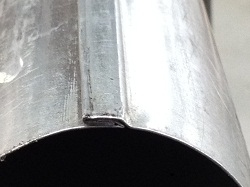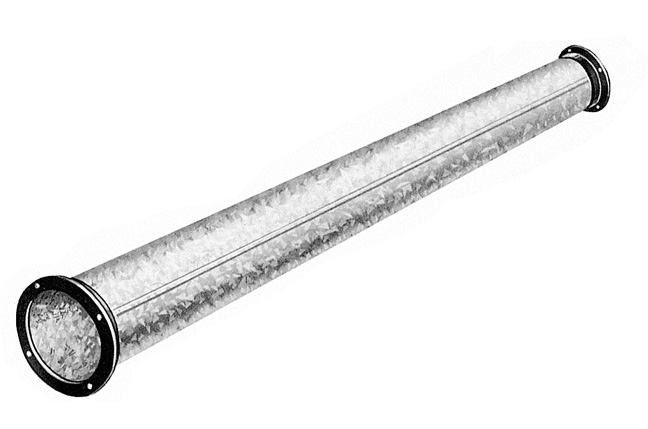Lock seam pipe has many applications. Often, they may be used as component parts of dust collection systems, ventilation systems and commercial downspouts. There are two styles of lock-seam pipe that are most commonly used spiral and straight lock seam. The style of lock seam pipe that is commonly considered the stronger and more efficient is straight lock seam pipe. Often this pipe will be fabricated via rolling steel plate and sheet, usually 16 to 24 gauge, to diameters ranging from 3 inches up to 14 inches, and in lengths of up to 10 feet long.
Straight lock seam pipe is made by first edging the material by bending one side of the end of the pipe down and bending the other side up. This is done, so that when the two ends are then rolled into a cylinder, these edges will be used to interlock with each other. Similar in function to hanging a coat on a hook. The edges are then mechanically locked by applying pressure along the length of the seam.

Some of the advantages of straight lock seam compared to spiral lock seam is that with straight lock seam the internal surface is much smoother and therefore avoids buildup at the seams. This is useful when particulate is blown through the pipe. Straight lock seam is also less likely to leak air because of the resulting design of the seam. The spiral lock seam can become unwound leading to air leakage if improperly sealed. The risk of seal leakage can also be a downside for spiral pipe for project uses such as oil mists. Straight lock-seam pipe can have the seam installed with the seam facing up, preventing any liquid from leaking out of the seam on the bottom of the pipe. Whereas spiral pipe naturally curves completely around the pipe.

To make connections from pipe to pipe, the sections of lock-seam pipe can either be welded or bolted together using angle rings provided by a roller bender company. One connection method is to use a Van Stone flange. This is done by slipping an angle ring over the pipe, cutting back the seam around a half inch, and then flaring the ends of the pipe. The advantage this allows is to enable the connecting flange to rotate around the pipe length for speed in matching to the partner flange. It is more difficult to connect spiral pipe in this manner.








